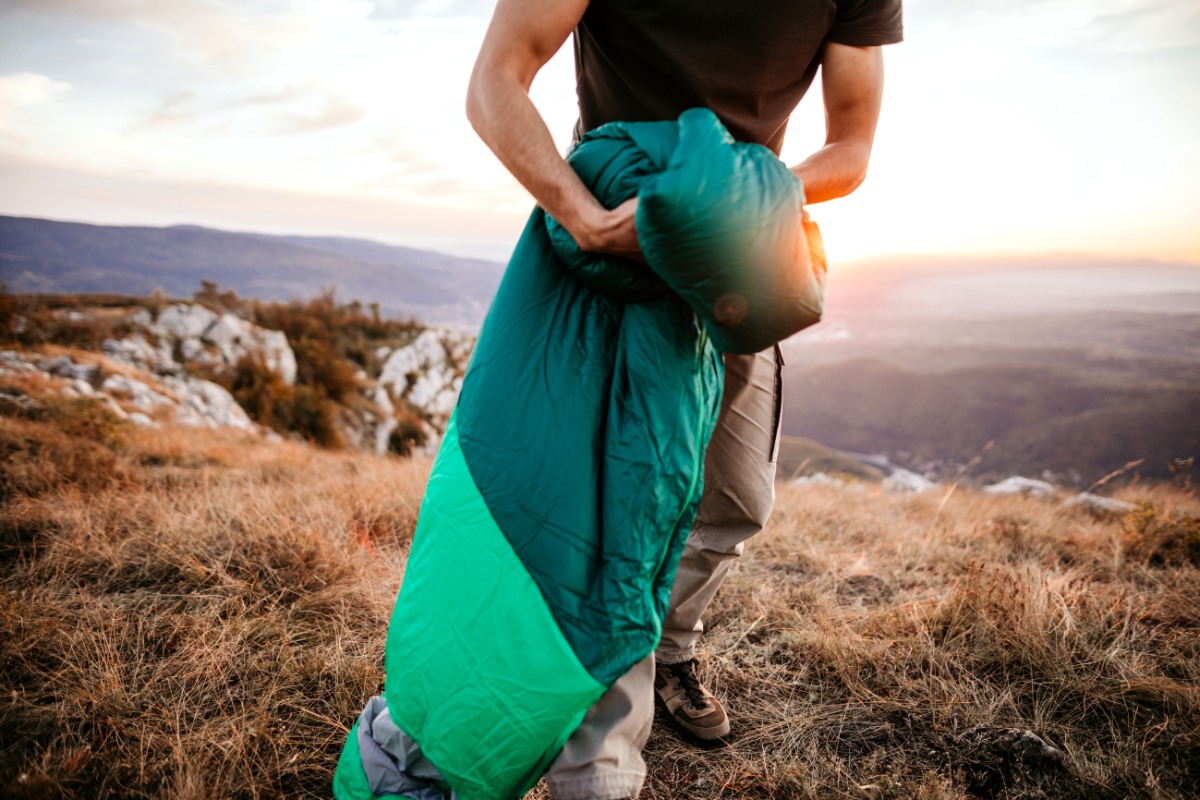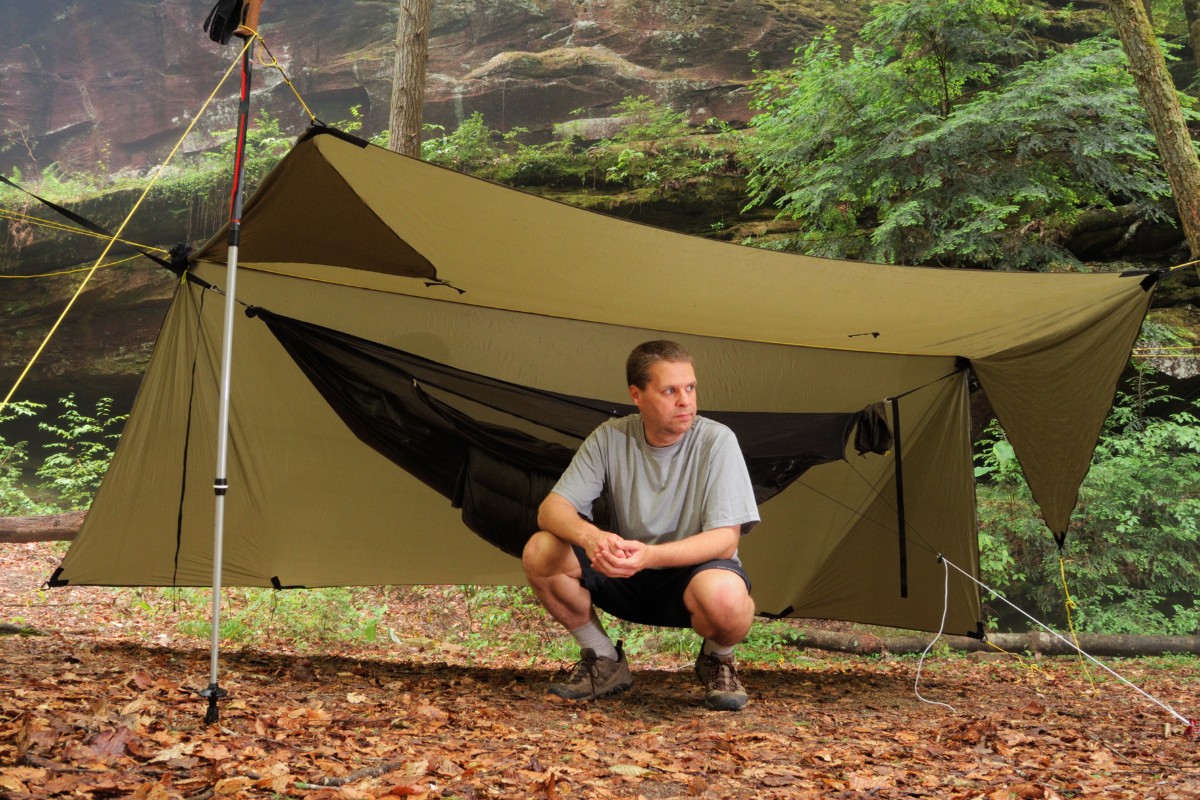Wherever you are, you need a comfortable sleep to get ready for the next day’s activities. To enjoy a comfortable and relaxing sleep, you need a clean and hygienic environment around you. To achieve this, you need to clean all of your belongings frequently. Cleanliness enhances freshness and makes you feel more comfortable in your surroundings.
Sleeping bags are used most when one is out traveling. When a person sleeps in a sleeping bag, sweat is excreted from the human body, and dust accumulates inside it. The sweat and dust make for an unpleasant odor and create a shabby appearance.
No one wants to smell body odor, so in this post, we will show you how to clean your sleeping bag. There are several ways to clean a sleeping bag, but we are only going to focus on methods that are easy to follow and don’t harm the sleeping bag’s quality.
How Often Should You Clean Your Sleeping Bag
It all depends on how frequently you use a sleeping bag. There is no need to wash it after every trip if it looks fine. You can wash it once or twice a year, but if you use it more frequently, it is recommended to wash it quarterly. Pulling out a nasty sleeping bag out of storage is no fun. If you are storing your sleeping bag for a long period after usage, then it is recommended to wash it before storing it because if dirt, body oils and sweat stay for a long period, it will deteriorate its quality and reduce its life.
Cleaning Based on Material Type (Synthetic or Down)
Sleeping bags are divided into two types depending on their insulation type.
Synthetic Sleeping Bag
Synthetic sleeping bags are cost-effective, a little heavier in weight than down and are easy to clean. This insulation type is made up of polyester material, which doesn’t absorb much water and is very effective and useful in wet weather conditions that you face during camping. They need special care during cleaning because corrosive detergents can cause harm to the insulation.
Down Sleeping Bag
Down sleeping bags are lighter in weight and are compressible. This means you can adjust them in backpacks easily. They absorb water, have more insulation power compared to synthetic bags, and are more expensive.
Effective Cleaning Methods for Sleeping Bags
There are several methods generally in practice to clean a sleeping bag. We will discuss all these available methods of cleaning along with their advantages and disadvantages, if any.
Machine Washing
- First of all, read all the instructions provided by the manufacturer. These instructions are available on the label or the booklet provided with the bag.
- Always use a front-load washing machine with enough capacity for washing a sleeping bag. Top-load washing machines are not recommended for this purpose due to agitating motion which can result in tearing the bag.
- Use specific detergents specially designed for synthetic sleeping bags because normal cloth washing detergents are not recommended due to their adverse effects on the quality of synthetic bags.
- Before placing it in the machine, unzip the bag properly. Otherwise, cleaning will not be done effectively.
- Use slightly warm water for washing or follow the instructions of the manufacturer.
- After the machine finishes the wash cycle, rinse the bag 2-3 times in clean water to drain out all the remaining detergent.
- Pull out the bag carefully from the washer with proper support to avoid any damage.
- The latest automatic washing machines come with the dual function of washing + drying, so you’ll just need to place the washed and dried sleeping bag in the open air for a while after machine drying.
- The drying should be done at low heat (check the washing instructions provided by the manufacturer).
Hand Washing
- Fill up a tub with a mixture of warm water or as per instructions mentioned on the label.
- Add mild fabric soap in water or other specially formulated detergents for the synthetic sleeping bag.
- Unzip the sleeping bag and dip it in the water.
- Now gently rub it with your hand or, if you prefer, you can also use your foot for this purpose.
- After that, drain all the soapy water and fill the tub with fresh water and rub again.
- Repeat this process twice or thrice until all the soap drains out.
- Pull the bag out of the water and allow the soaked water to drain.
- Roll it up and squeeze it properly but gently without any use of extra force.
- Now open it and dry it in the open air under sunlight or by using a blower.
Spot Cleaning
It’s a simple method in which you apply the cleaning process to a specific point on the sleeping bag where you have noticed some soiling. If there is dirt or soiling on some specific points, then there is no need to wash the whole bag. You can save time and cost by using this easy and effective method. You just have to follow these simple steps.
- Wet the spot with water and then apply mild soap or detergent, which are used in the washing process.
- Use a soft toothbrush to rub the soiled area. Rub it with your hands for a few seconds.
- Rinse the spot with water until all the soap is rinsed out.
- Squeeze it and allow it to rest for a while for drying purposes.
Dry Cleaning (NOT RECOMMENDED)
Dry cleaning is not recommended in the case of both synthetic and down sleeping bags. Oils or salts accumulated in sleeping bags will leach down deeper inside due to the use of different dry-cleaning solvents. Different bleaches used for this purpose can also react with the fabric and affect its quality. So the above-mentioned 3 cleaning techniques are recommended, but this one is not recommended in any case.
Tips for Extending the Life of Your Sleeping Bag
- Try to wear clean clothes before going to sleep in a sleeping bag.
- Place your sleeping bag on a smooth, plain surface and avoid direct touch with the floor.
- Clean all dirt spots with a brush and soap during frequent usage.
- Place the bag in the open air under sunlight for some time after usage.
- Use a liner, preferably a cotton or polyester liner. It helps to keep your sleeping bag clean.
- Do not place your bag under a lot of weight for a long period of time.








